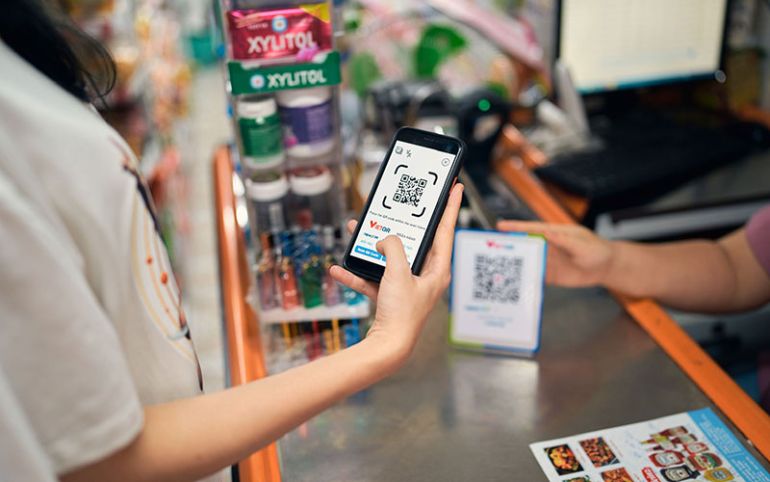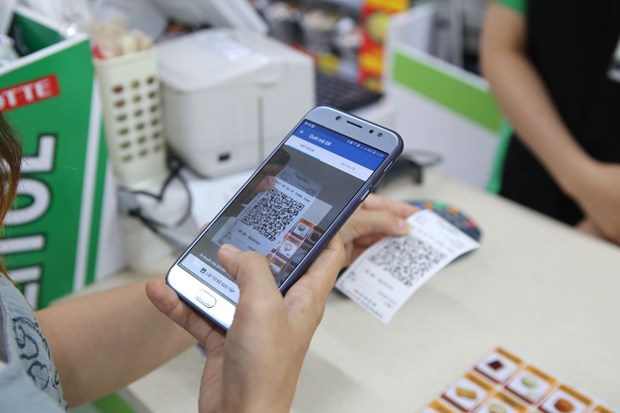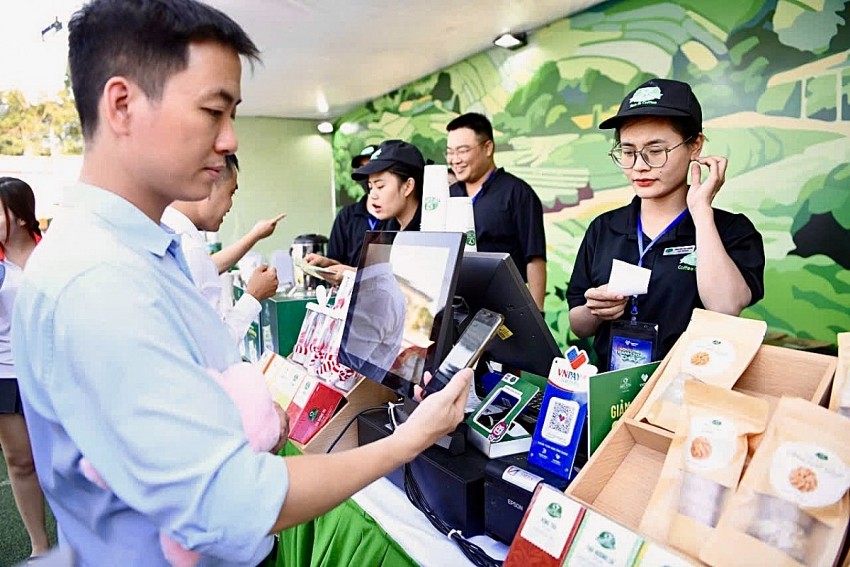Measures for enhancing security and safety in cashless transactions
- 221
- Digital
- 10:35 28/06/2024
DNHN - In today's fast-paced world, cashless transactions are becoming increasingly popular, offering unparalleled convenience to users. However, ensuring the security and safety of these transactions necessitates appropriate measures.

One of the most critical measures in safeguarding cashless transactions is data encryption. Sensitive information such as credit card numbers, passwords, and personal user data must be encrypted to prevent unauthorized access and misuse. Encryption transforms data into a secure format that can only be read with the correct decryption key, providing a robust barrier against cybercriminals.
For significant transactions, two-factor authentication (2FA) is an effective way to enhance security. In addition to a password, users must verify their identity using an additional factor, such as a one-time password (OTP), fingerprint, or facial recognition. This dual-layer verification makes it much harder for fraudsters to gain access to accounts.
Advanced monitoring systems are essential in identifying fraudulent and unusual activities in cashless transactions. Utilizing cutting-edge technology and data analysis algorithms, these systems can detect abnormal behavior patterns and prevent fraudulent activities before they escalate.
Protecting users' personal information is crucial in cashless transactions. Organizations must adhere to stringent data security policies to protect users' personal information from unauthorized access, misuse, or illegal sharing with third parties.
Moreover, educating users about the risks and security measures in cashless transactions is vital for enhancing security. Users should be guided on how to recognize and prevent various forms of fraud and cyber-attacks. Regularly updating and maintaining systems is also necessary to prevent security vulnerabilities, ensuring the latest software versions and patches are in place to protect the system.
Organizations and users must collaborate with government agencies, banks, and payment service providers to comply with security regulations and standards. Adherence to regulations such as the Payment Card Industry Data Security Standard (PCI DSS) and the General Data Protection Regulation (GDPR) is essential to create a secure and safe environment for cashless transactions.
According to the State Bank of Vietnam, the push towards cashless payments has seen significant achievements recently. The banking sector has been at the forefront of adopting information technology and digital transformation, launching modern cashless payment products and services that meet the immediate transaction needs of individuals and businesses. By the end of 2023, over 95% of transactions were processed through digital channels, with mobile and QR code payments showing rapid growth.
However, with the rise of cashless payments, the banking sector faces numerous security challenges, especially with the increase in high-tech crime. To combat this, the banking sector has implemented comprehensive measures, including refining policies and guidelines, deploying technological solutions, conducting awareness campaigns, and collaborating closely with authorities to counteract online fraud. These efforts aim to enhance public awareness and vigilance against security risks and new criminal activities in the banking sector.
In conclusion, enhancing security in cashless transactions requires a multifaceted approach. Implementing data encryption, two-factor authentication, advanced fraud detection systems, personal data protection, user education, system updates, and regulatory compliance are crucial steps. Combining these measures will ensure cashless transactions are secure, providing peace of mind for users as they navigate the modern landscape of digital payments.
Dai Hai
Related news
#cashless payments

Ha Long eyes over-20-percent annual growth in cashless payments
Ha Long city is hoping for an average annual growth rate of 20 - 25 percent in the number and value of cashless payments by 2025.

VINASME and VISA collaborated to promote financial solutions for small and medium-sized enterprises
On September 10th, at the Government Office Conference Center, the VINASME and the international card organization VISA will co-host a seminar titled "Payment and Financial Solutions for Small and Medium-sized Enterprises".

Phuc Long joined cashless payments
Phuc Long continues to assert its pioneering position in the F&B industry by participating in Vietnam Card Day 2024 with the theme “Chill Life, Cool Payment.”
Đọc thêm Digital
Cybersecurity talent & digital entrepreneurs: Vietnam racing to fill a 700,000-person workforce gap
The “Student Cybersecurity Festival & Final Round of the 2025 Vietnam Cybersecurity Student Competition” (CSCV 2025), held on November 15 in Hanoi, became a major focal point for the technology community.
"Digital technicians" must not be forgotten if Vietnam aims to meet its strategic goals
Vietnam is facing a serious shortage of skilled technical operators. Without retaining its “digital technicians,” the ambition to become an AI hub may never materialize.
Prime Minister: Vietnam aims to become a regional logistics hub
At the 2025 FIATA World Congress in Hanoi, Prime Minister Pham Minh Chinh emphasized logistics as one of Vietnam’s key growth drivers, highlighting major infrastructure investments and commitments to attract global investors.
VietLeap AI Accelerator launches: A strategic springboard for Vietnam’s AI startups
The program is expected to select 10 to 15 high-growth potential AI startups with clear funding needs.
Vietnam advances cybersecurity law to boost digital sovereignty and business resilience
In a significant step towards strengthening Vietnam’s digital defenses, the National Assembly Standing Committee convened on September 23 to review the draft revised Cybersecurity Law.
Vietnam embraces digital tools to modernize public administration
Across Vietnam, local governments are turning to digital platforms, QR codes, and AI-powered assistants to modernize public services—making them faster, more transparent, and more accessible to citizens.
Administrative procedures for establishing the national technology exchange reduced to one application set
Deputy Prime Minister Nguyen Hoa Binh has just signed Decision No. 2108/QD-TTg approving the plan to streamline internal administrative procedures within the state administrative system under the management of the Ministry of Science and Technology.
Government’s plan to implement Law on Digital Technology Industry approved
The Government has approved a plan to implement the Law on Digital Technology Industry (the Law) scheduled to take effect from January 1, 2026, according to a report from the Government News.
Shark Nguyễn Hòa Bình: Hanoi will become the capital of startup innovation.
Recently, in Hanoi, the seminar “Formulating City People’s Council Resolutions to Promote Science and Technology Development in Connection with the Implementation of Politburo Resolution No. 57-NQ/TW and the Capital Law No. 39/2024/QH15” was held.
Da Nang proposes semiconductor cooperation with Oregon (USA)
Leaders of Da Nang City have proposed that Oregon (USA) and the city explore cooperation opportunities in priority sectors such as semiconductor technology, logistics, and the development of Free Trade Zone (FTZ) infrastructure.











